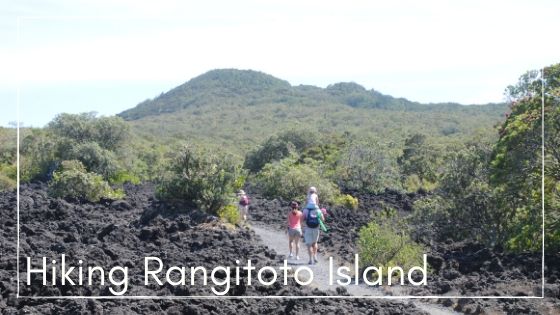
Rangitoto is a sight that can’t be missed! From almost every viewpoint in the city (see my post on the five best viewpoints here!), you can see Rangitoto standing sentinel over the mouth of the harbour. It’s an absolute must do – If hiking Rangitoto Island is not already on your Auckland to do list, then get it on there now!
As a destination, it’s just been sitting there, waiting for me to visit. And I’ve been waiting for the perfect day to head out there. Last weekend was the perfect time, the temperature was hovering in the mid 20’s, there was a bright blue sky, and a gentle breeze. (And I was up and moving early enough to make it our there at a decent time).
If you’re thinking about Hiking Rangitoto Island, but don’t have time to read on now, pin it here for later!
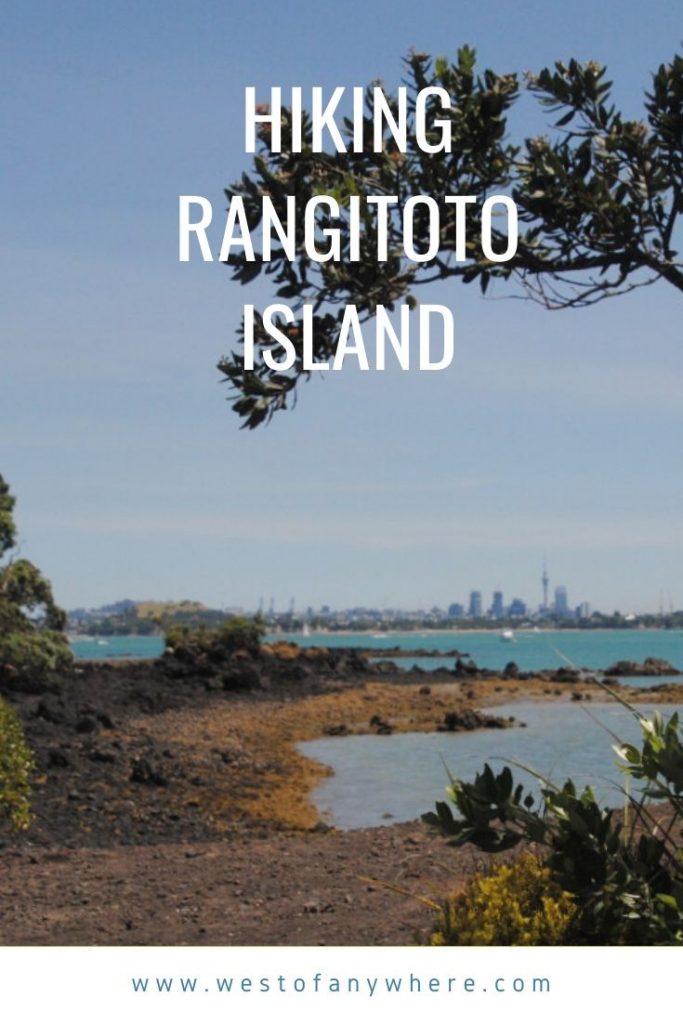
Getting there and getting hiking!
From Auckland, it’s just a short 20-25 minute ride across to the island from the ferry terminal. On arrival at the wharf, I disembarked, and headed straight for the information boards. I hadn’t really gone prepared and needed to snap a photo of the trail maps and plan my route right there and then.
It’s a fairly straightforward trail system, with just a few options. I decided to head straight up to the summit (via the lava caves), then descend the long way – down Summit Road to McKenzie Bay then back along the McKenzie Bay road to the Rangitoto Wharf. I hoped that I’d escape some of the crowds by walking back that way.
If you’re thinking about exploring Rangitoto, then I’d highly recommend this route, as it really paid off, and I walked alone most of the way after leaving the summit, and totally alone after leaving McKenzie Bay!
Here’s some more details about what to expect and the most fantastic views you’ll get to experience on this hike!
From Rangitoto Wharf to Rangitoto Summit
The DOC literature estimates that it’s around a one hour walk to the summit. I’d say it’s about right, and takes into account plenty of time to stop and enjoy the views along the way.
Around ten minutes into the hike there is a little boardwalk spur to a lookout. Here you can look up to see how far you have to go, or look down, and read some interesting information describing how this volcano was formed – I’ll get into that later!
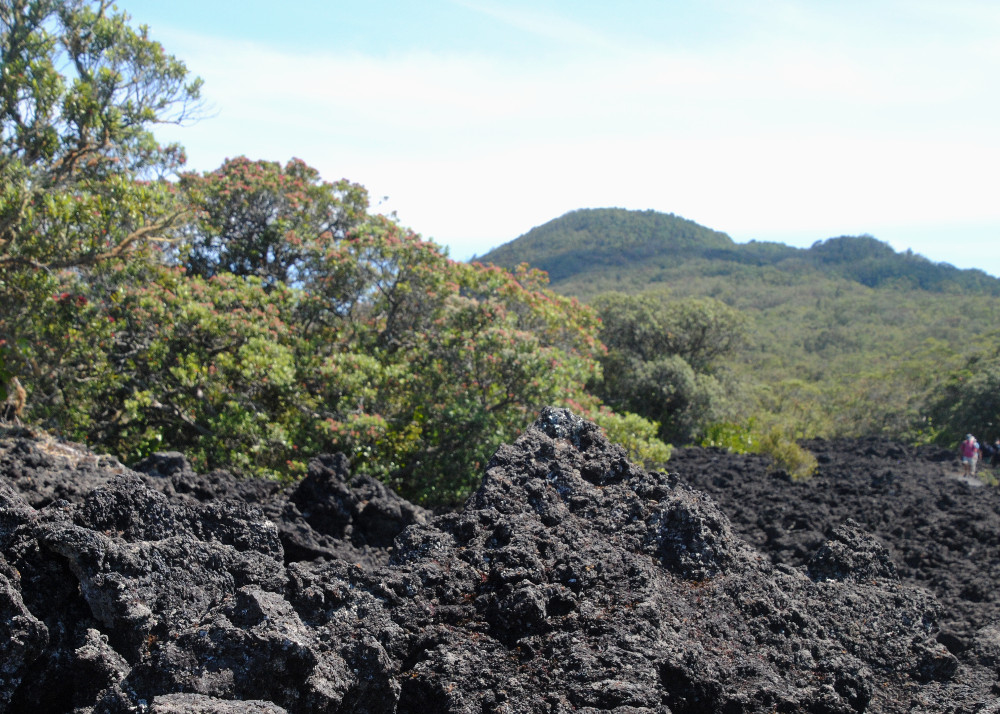
Continuing on up the hill, you’ll have several opportunities to stop and enjoy the views back across Waitemata Harbor. They only get better the further you go!!! Take the opportunity for a breather and stop to take pics at each point, as if you follow the same route as me, you won’t be returning this way.
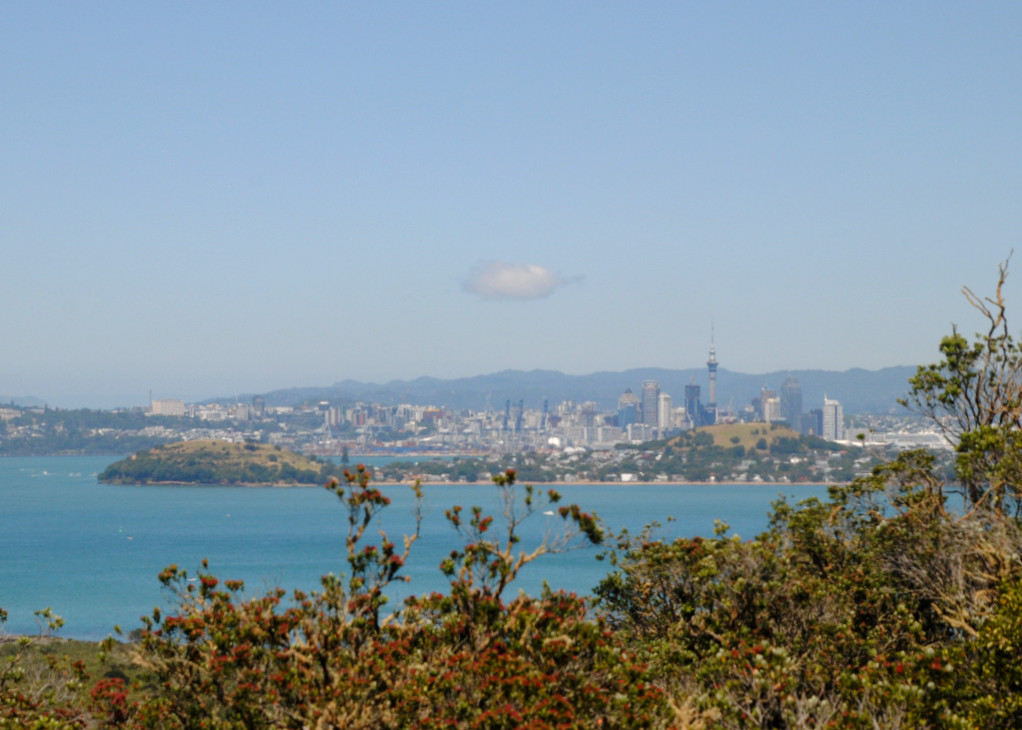
Around 45 mins into the hike, you have the opportunity to take the spur trail to the lava caves. It’s a reasonably easy 15 minutes to the entry of the lava cave, and if you’ve come this far, you might as well visit the caves as well. Just remember to take a head torch with good batteries, as I found that my phone flashlight wasn’t much chop in the dark (or maybe I’m just a scaredy cat – or both).
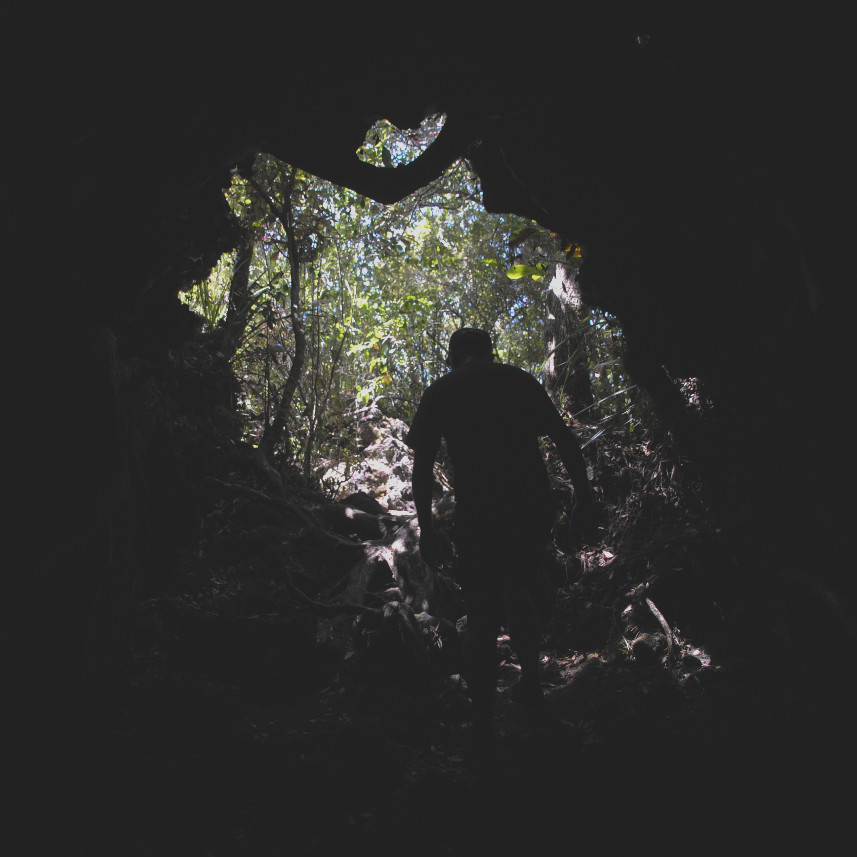
Back at the trail junction, there were plenty of people stopping for a rest and snack in the shade. While it was a nice shady spot, if you’re going to hike the loop, I’d implore you to keep going and save your lunch break for McKenzie Bay.
From the trail junction, it’s just 15 minutes walk to the summit. You’ll reach the crater viewpoint first. Take a moment to admire the dense foliage in this 60m deep, 200m wide crater before you head to the summit. If you’re there at the right time of year, and you’re lucky, the pohutukawa might even be in bloom!
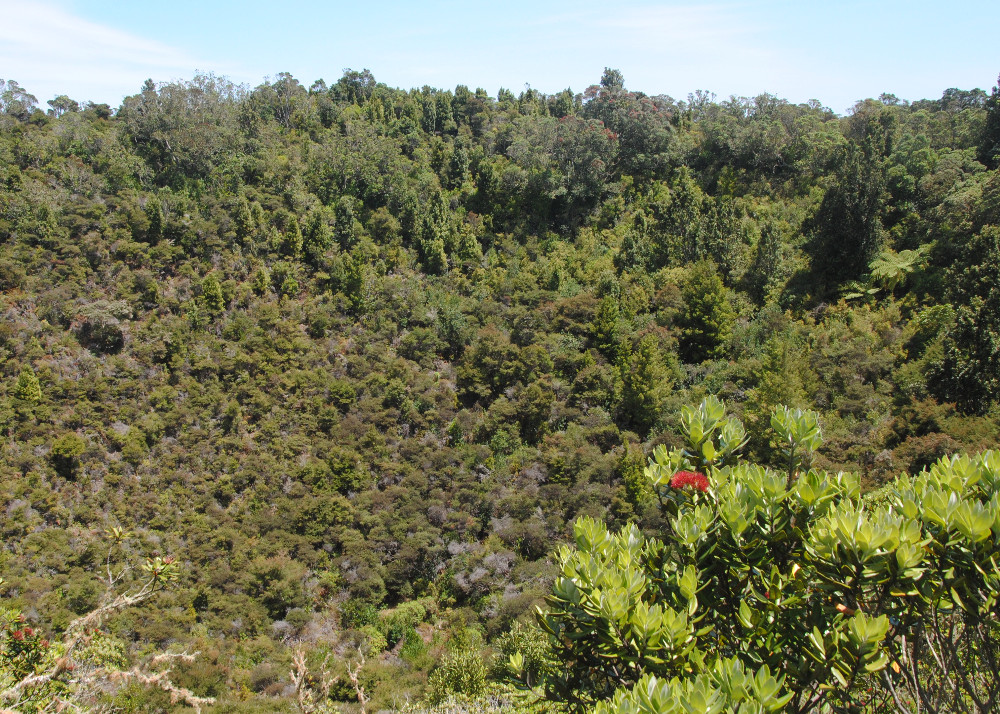
From the crater rim, it’s just a short walk up the steps to the summit. The views just about knocked my socks off. Rather than trying to describe it, just check out these images. Such spectacular scenery, I couldn’t get enough of it. Stunning views of not only the Auckland skyline, but the entire Hauraki Gulf!

Rangitoto Summit to McKenzie Bay
Once you’ve had your fill of the view (you might be there a while), then I’d recommend a stroll around the crater rim trail before you start out on your return trip.to the wharf. The best view if the crater is from the viewpoint that you already passed on the way to the summit, but how many times do you get to walk around the rim of a crater?
Once you’ve circumnavigated the crater, you’ll return to the crater viewpoint, and from here, there are a couple of options for your return to the wharf.
If you’re following the route I took, you’ll head down the boardwalk trail towards the summit road. The boardwalk is delightfully shaded and offers some gorgeous views towards the outer island in the Hauraki Gulf. Make sure you keep an eye out for all of the most magnificent vistas along the way.
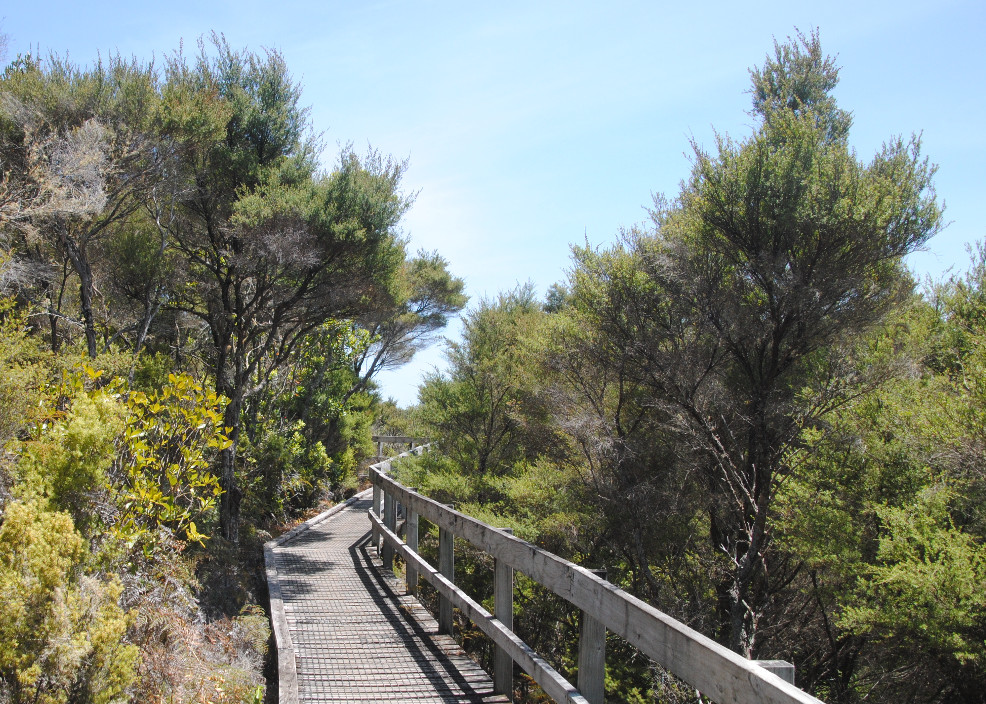
Once you reach the summit road, you’ll turn left and keep walking along the roadway.
If you’re short on time, or not feeling up to the return walk you can either return via the trail you ascended on, or walk down to the summit road and wait for the tractor trailer to transport you back to the wharf.
Summit Road is a dark gravel/ volcanic rock surface, and a pretty easy walk downhill. The further you travel from the summit, the more exposed the road becomes. Make sure you’ve reapplied sunscreen and have a hat if possible, but keep your phone or camera handy as there’s some speccy views along the way!!
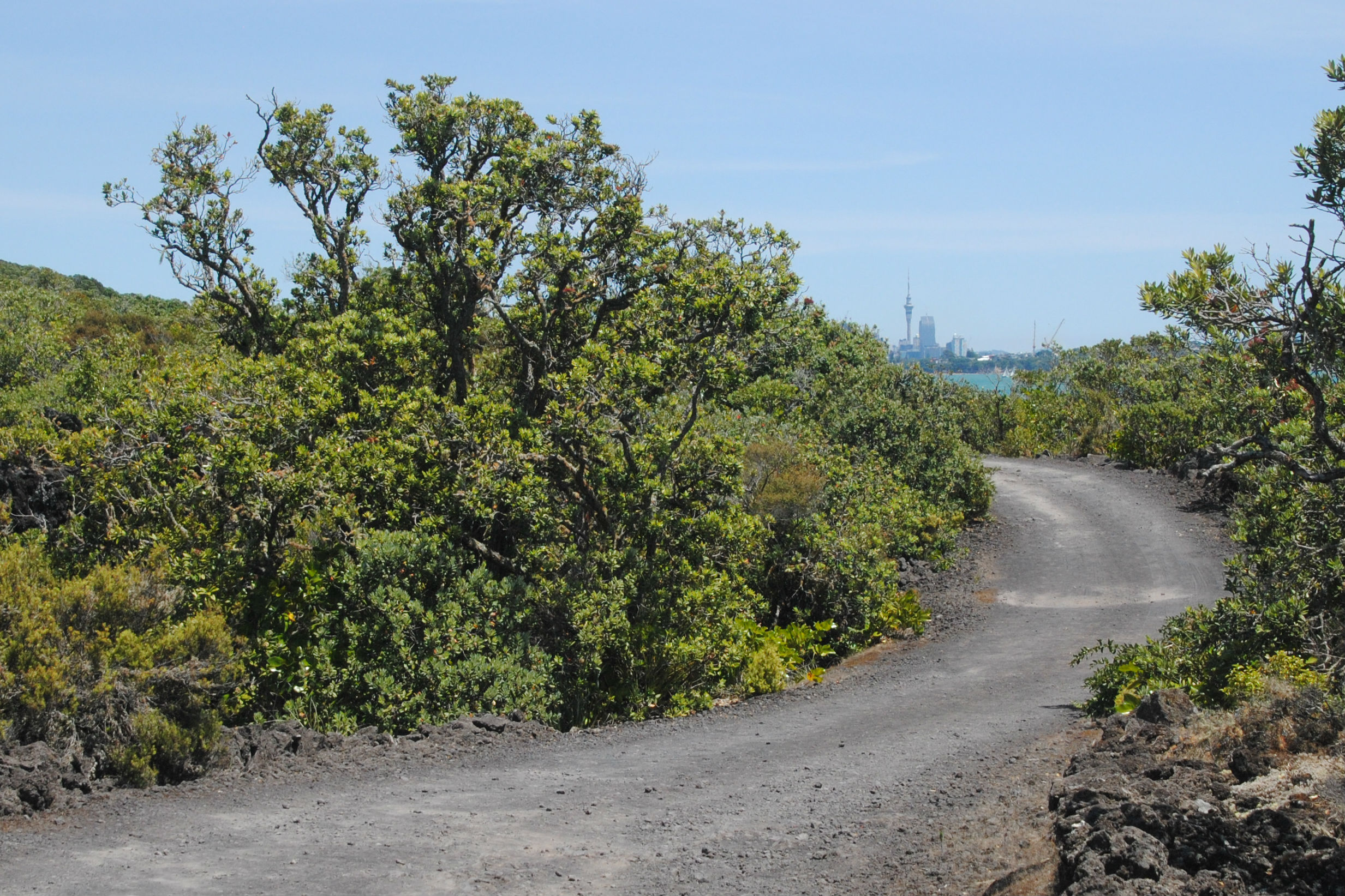
As you know by now, my recommendation is the walk. It’s around an hour at the most to McKenzie Bay, which is a lovely little protected bay on the Western side of the island, with views of the lighthouse and across to Auckland’s north coast. I’d recommend stopping on the beach for a breather and to enjoy the lunch you brought with you. If you’re planning to spend the entire day on the island, take your swimmers and have a refreshing dip in the bay during your lunch break.
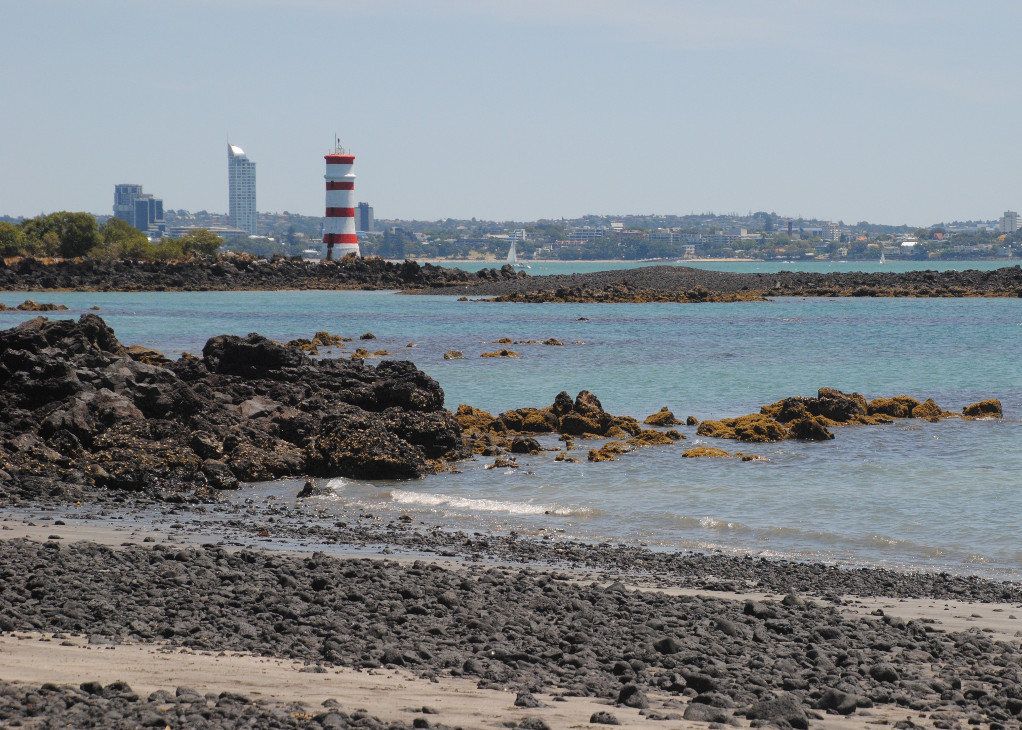
Check your timing, from here, a direct stroll back to the wharf takes around an hour and a half, so you may be able to spend some extra time enjoying this special little beach location!
McKenzie Bay to Rangitoto Wharf
As you leave McKenzie Bay, you go back out onto the road, and continue heading in a counter clockwise direction back to the wharf. This section of the road is VERY exposed – there’s hardly any shade at all.
To counter that, there are some more lovely views across the Harbor along the way. Just make sure that you have plenty of water with you, as you’ll need it when you’re walking in the full sun.
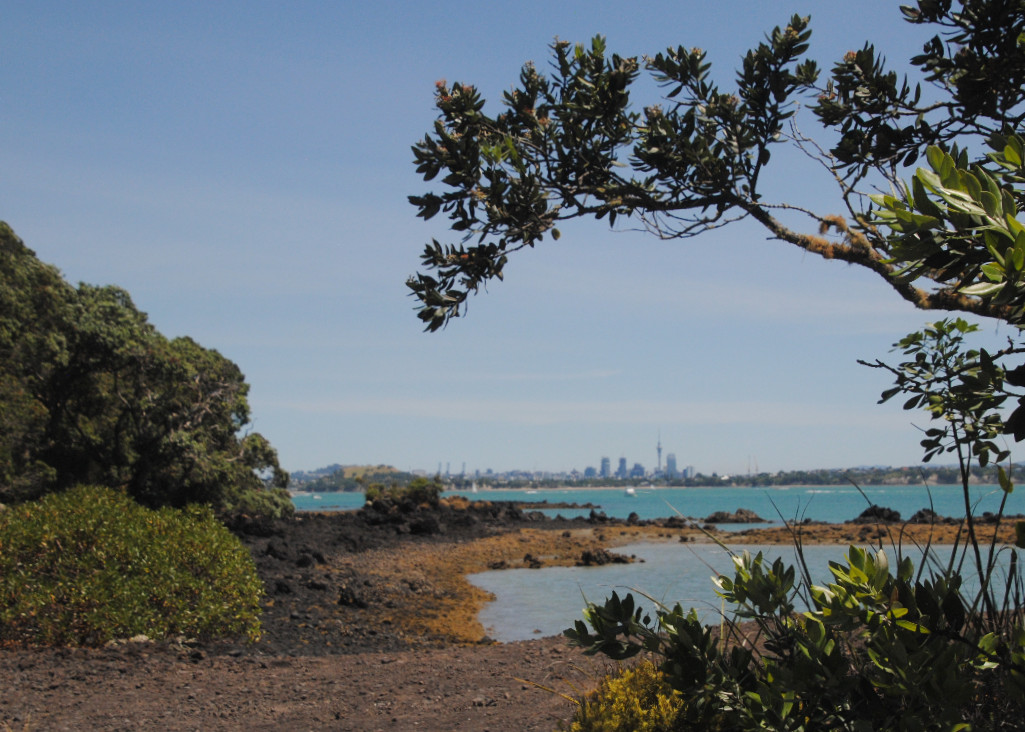
Along the way, there’s a little spur trail to Flax Point if you’re up for it. The trail has an uneven volcanic rock surface, and leads towards the coast and the black back gull breeding colony . I was running really low on water, so didn’t take this detour, but I was still able to see the colony from the road and found this straggler posing in front of yet another epic skyline view!.
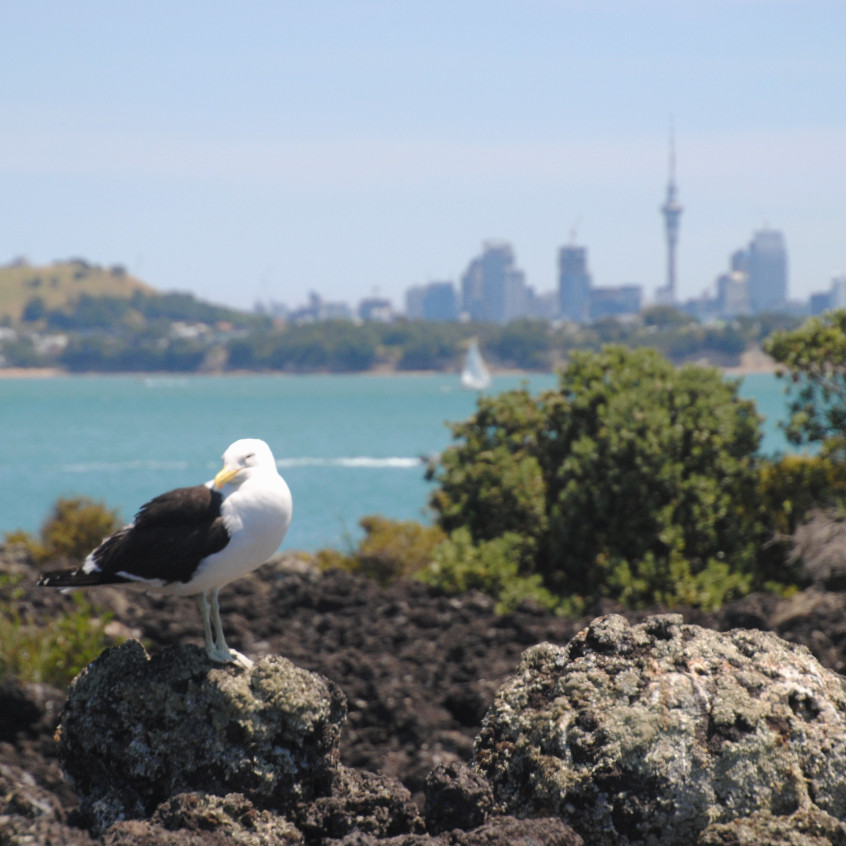
Closer to the wharf, you’ll pass by some of the historic bach’s (holiday homes) that were built on the island from the 1920’s onwards. There’s also the option to take another little spur trail that leads you through the kowhai grove and the kidney fern glen. Check the ferry schedule, and take a short wander through these trails if you have the time. It was a toss up – i was enjoyed the views of the rugged volcanic coastline, so continued on the trail towards the wharf.
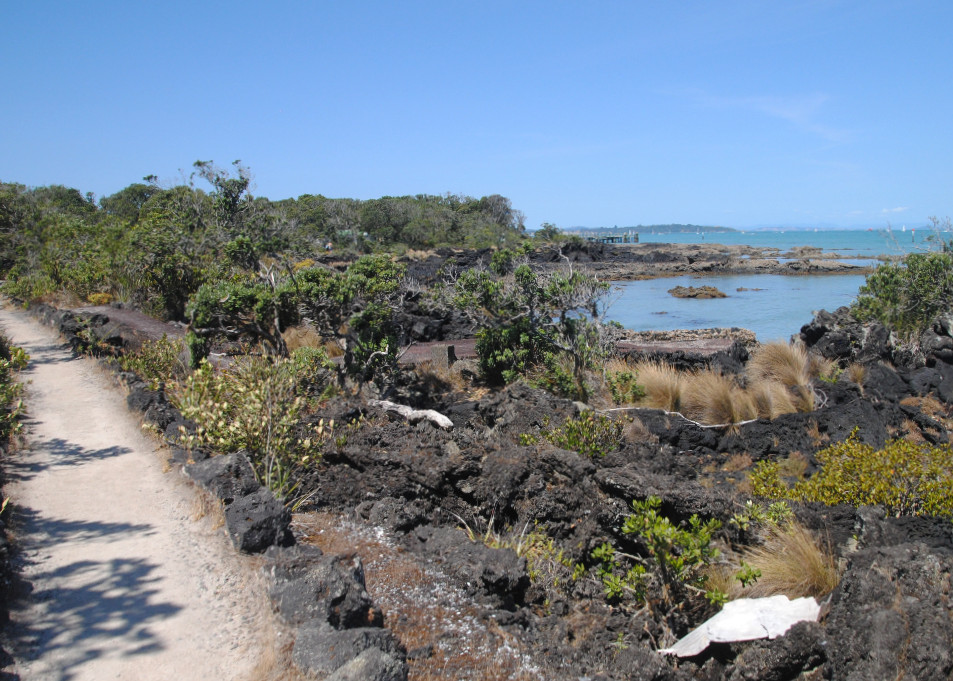

I had just enough time for a bathroom stop before heading to the wharf. There was quite a lineup of people waiting for the next ferry. If you’re running late, then just head straight to the wharf, the ferries have facilities on board.
About Rangitoto
Rangitoto appeared out of the sea around 600 years ago. It’s the most recent, largest and least modified of all the volcanoes in the Auckland field, which is made up of around 53 dormant volcanoes, all located within 6km of one other neighboring volcano.
Rangitoto is a basalt shield volcano with plants colonizing it’s lava fields – a miniature version of the Hawaii volcanoes. There are over 200 native plants colonizing the island, thriving in the harsh conditions. Some of the trees take root in rotting leaves directly on top of the lava fields. The harsh conditions also mean that birds and wildlife are sparse on the island. Apart from two colonies of black billed gulls, there are very few birds or other wildlife due to the lack of water and food resources.
It’s quite a unique environment, and well worth a visit for the day.
Mapping the route…
The DOC map shows all of the trails on the Island… check it out here
The DOC website also outlines some other hike options here. If I get the chance to visit for a second time, I’d like to take the Coastal Track to Islington Bay. From Islington Bay Road, I’d turn onto the Wreck Bay Track towards the coast, where the remains of some ships can be seen at low tide.
Tips for a fun day out Hiking Rangitoto Island
During the Summer season, weekends can be busy on Rangitoto Island, and ferry tickets do sell out. Purchase your tickets online to ensure you don’t miss your preferred departure. You’ll also receive a small discount when you purchase online.
Arrive at the Auckland pier at least 15 minutes prior to your ferry departure.
Be prepared:
- Make sure you have plenty of water and snacks with you as there are NO retail outlets on the island at all.
- Wear sturdy walking shoes – the lava base means that some of the trails can be rough!
- Finally, make sure you have sunscreen and a hat. The sun reflects off the lava, and it gets hot out there!
Check the ferry departure times, and make sure you are back at the wharf in plenty of time for the last ferry of the day. Ferry timetables can be viewed here. If you forget to check the timetable, the captain will remind you as you disembark, but it’s also signposted on the island.
Remember all of the above, and you are bound to have a fantastic day hiking Rangitoto Island. Let me know what you think!


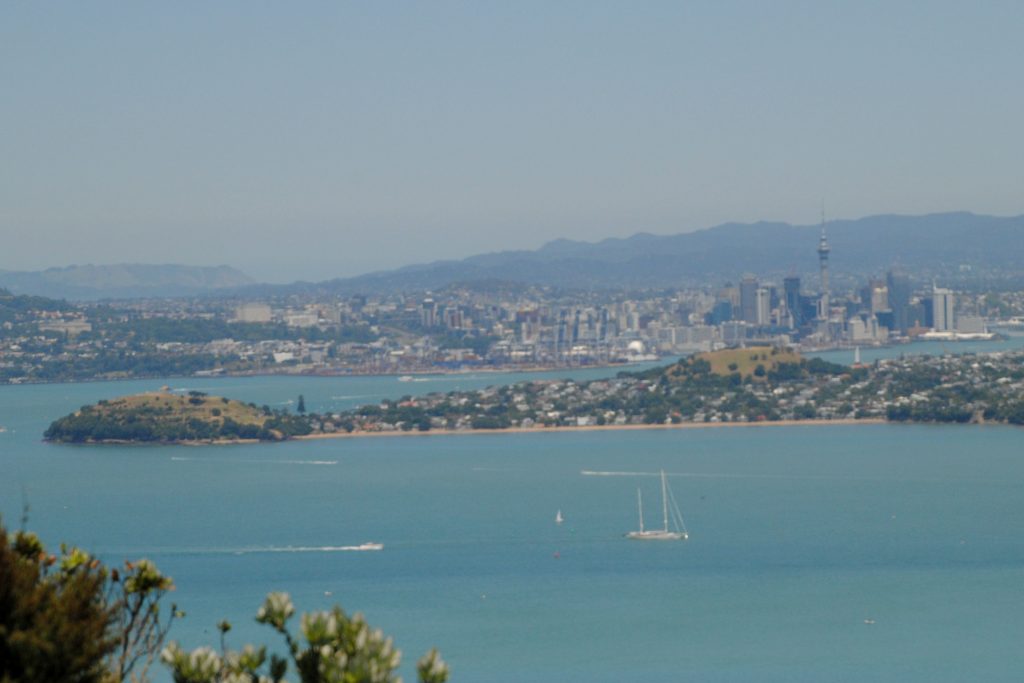
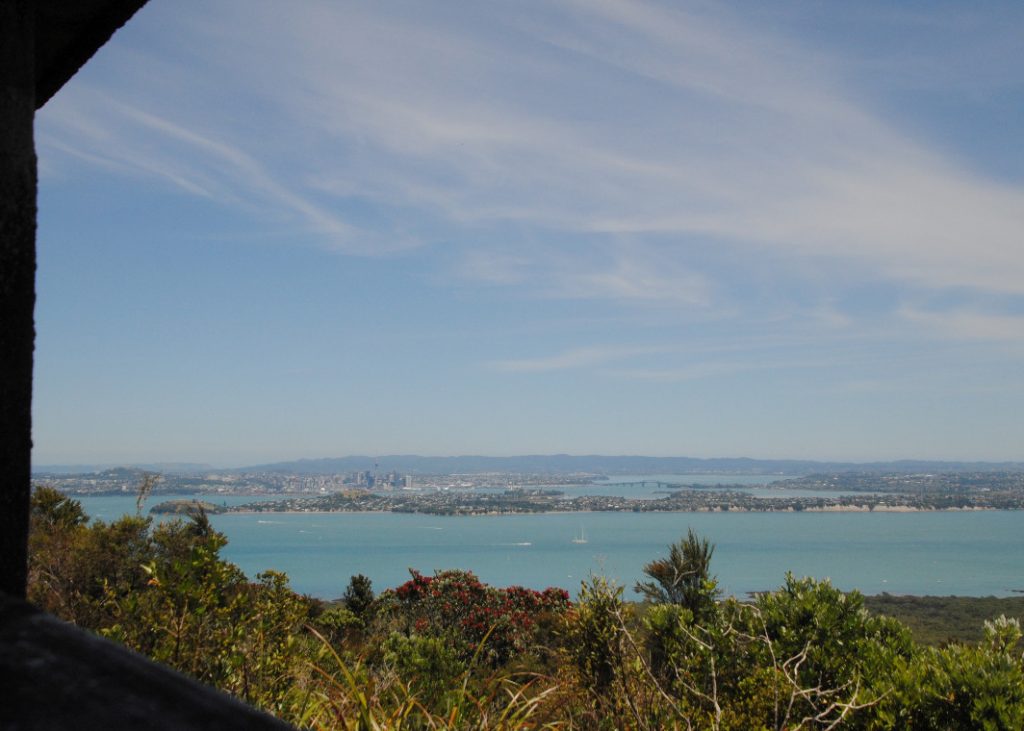
Recent Comments